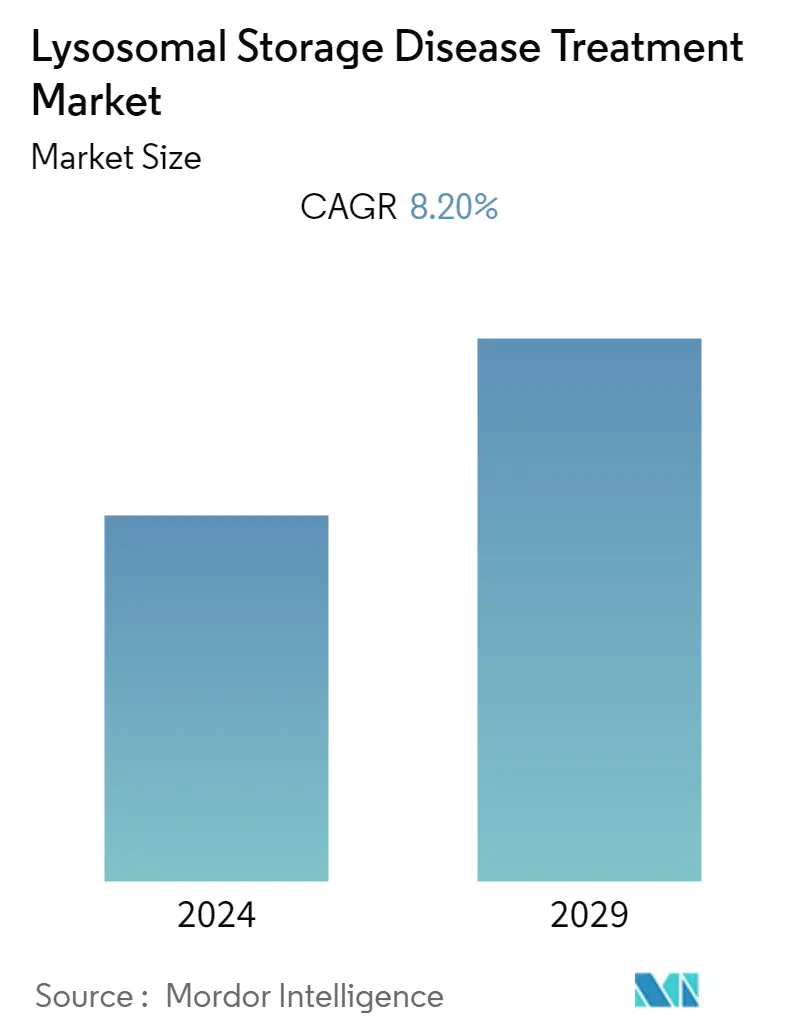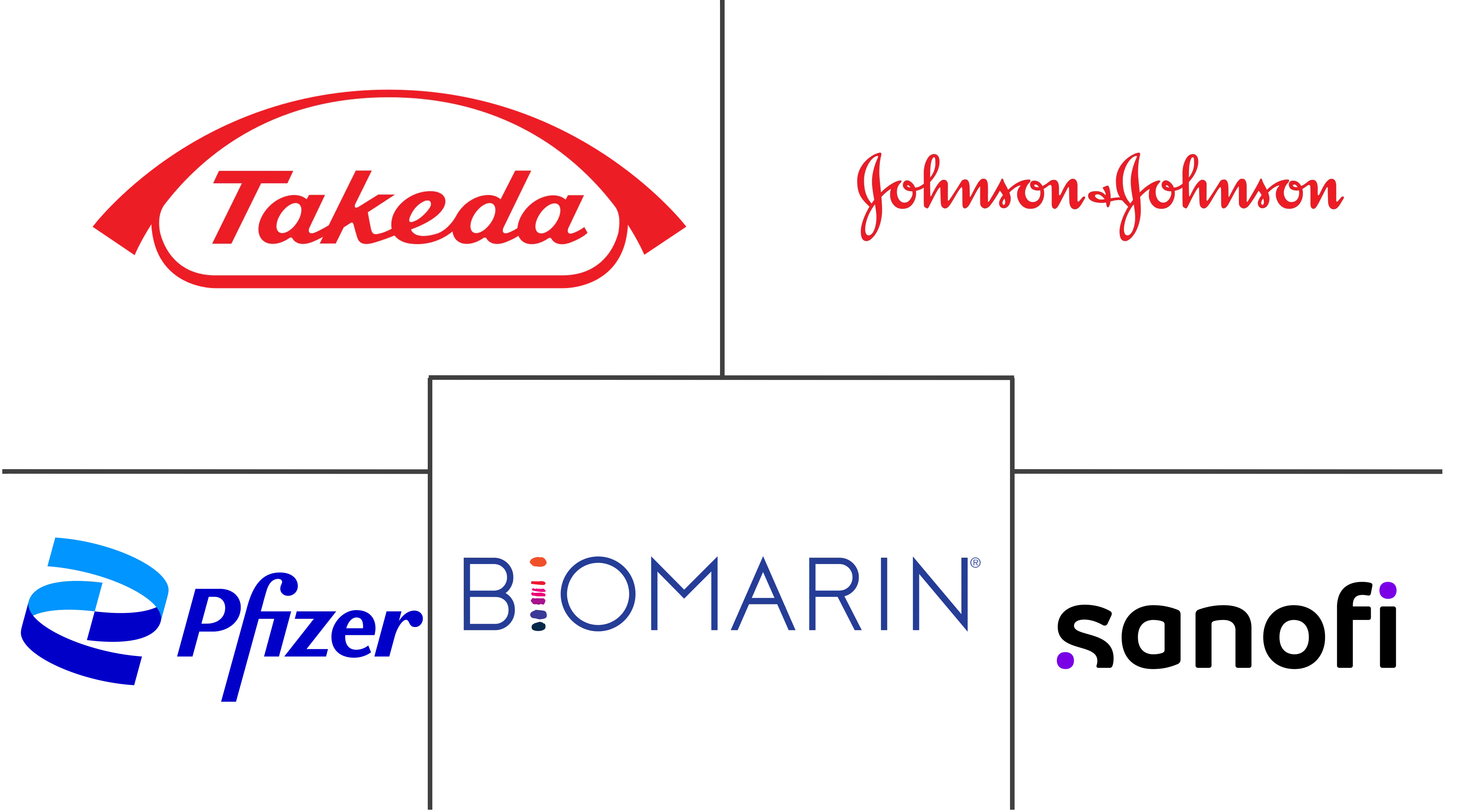Market Size of Lysosomal Storage Disease Treatment Industry

| Study Period | 2021 - 2029 |
| Base Year For Estimation | 2023 |
| CAGR | 8.20 % |
| Fastest Growing Market | Asia Pacific |
| Largest Market | North America |
| Market Concentration | Medium |
Major Players
*Disclaimer: Major Players sorted in no particular order |
Need a report that reflects how COVID-19 has impacted this market and its growth?
Lysosomal Storage Disease Treatment Market Analysis
The lysosomal storage disease treatment market is expected to register a CAGR of 8.2% during the forecast period.
The growth of lysosomal storage disease treatment is driven by increased research and development, and the spread of awareness among people about the lysosomal storage disease. Furthermore, the increasing investment in research and development also contributes to market growth. As per the study published by the National Library of Medicine, in July 2022, when viewed as a group, LSDs are much more common. The combined incidence is between 1 in 5000 to 1 in 8000. As per the same source, both ethnicity and geography play a part in the incidence of LSDs. For example, Gaucher disease (GD) occurs in 1 in 40000 to 1 in 60000 in the general population. In Eastern European Jews (Ashkenazi Jews), GD is as high as 1 in 800, and Tay-Sachs disease is as high as 1 in 3900. Niemann-Pick A and mucolipidosis IV also occur with increased frequency in this population. In the Finnish population, aspartylglucosaminuria occurs at a frequency of 1 in 18500. Thus, the increasing burden of LSDs is expected to increase the growth of the lysosomal storage disease treatment market over the forecast period.
Launching novel drugs worldwide will boost the demand for treatment of this disorder and further drive the market's revenue growth. Moreover, increasing R&D expenditure globally will also promote working on novel therapeutics and treatment of lysosomal storage diseases. For Instance, in February 2021, Genethon launched a gene therapy clinical trial for late-onset Pompe disease, led by the company Spark Therapeutics, using technologies developed at Genethon.
Moreover, awareness related to lysosomal storage diseases is crucial for patients and healthcare staff. In recent years, there has been a rise in awareness related to the treatment of Fabry disease in different countries such as the United States, United Kingdom, and others. For instance, according to National Fabry Disease Foundation (NFDF), every year 'April' is observed as Fabry Disease Awareness Month. Furthermore, other organizations that formally observe April as Fabry Disease Awareness Month include Fabry International Network (FIN), Fabry Australia, and MPS Society in the United Kingdom. In addition, during April, these organizations raise awareness of Fabry disease. This includes educating the public, patients, caregivers, and healthcare professionals. Furthermore, the awareness activities help to enhance the perception, diagnosis, and management of such diseases.
Furthermore, increasing development in enzyme replacement therapies and gene therapy will also create a lucrative opportunity for the pompe disease market in the forecasted period as these are the therapies used to treat this disorder. However, high treatment costs associated with lysosomal storage diseases may hamper the market to a certain extent.
